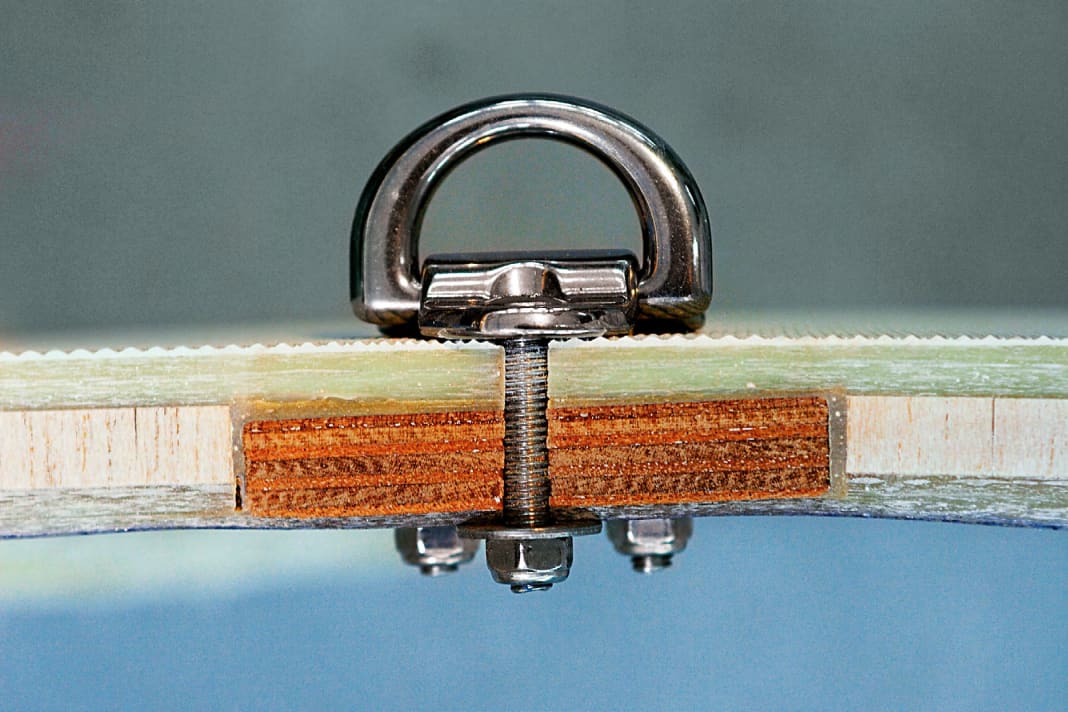





Simply screw a self-tapping screw with some sealant into the deck and the new guide eye is retrofitted. What may work well with solid laminate inevitably leads to problems with sandwich decks. And in two ways. Firstly, the screw can hardly find a hold in the soft core and the eyelet tears out at the first load. Secondly, penetrating moisture can lead to serious structural damage, especially if the core is made of balsa wood.
The pressure-sensitive core must be replaced in order to install fittings using this construction method, which is widely used for weight reasons. Whether this is made of foam, wood or a honeycomb structure is irrelevant, but the strength of the forces that need to be applied is. For low loads, simple moulding is sufficient. Winches, cleats or even organisers and other highly loaded items of equipment require more effort, as the sandwich needs to be reinforced over a larger area.
Glue on fittings with epoxy resin
Epoxy resin is an excellent means of fastening fittings. The resin is thickened with a high-density filler and replaces sealant, nuts and counter plates. Epoxy expert Helge von der Linden recommends bonding for railing feet, winches, cleats and other heavily loaded fittings.
The advantage of this is that the forces acting on the components are better transferred to the hull and deck than with conventional bolting or screwing. However, modifications are necessary for the system to work. Take the railing foot as an example: A large block of wood is glued under the deck with epoxy at the mounting location of the support. The foot is then placed on the deck and suitable blind holes are drilled into the block from above. The hole diameter should be around two millimetres larger than the fastening screws of the support.
Once this preparatory work has been completed, the holes are filled with the thickened resin and the screws are inserted. After hardening, the fitting is permanently fixed. As there is a large-area frictional connection, there is no need to worry about the screws jolting loose or the flange leaking. Only disassembly is more tedious. To loosen screws bonded with epoxy, they have to be heated to around 180 to 200 degrees using a soldering iron, only then does the resin lose its strength.
